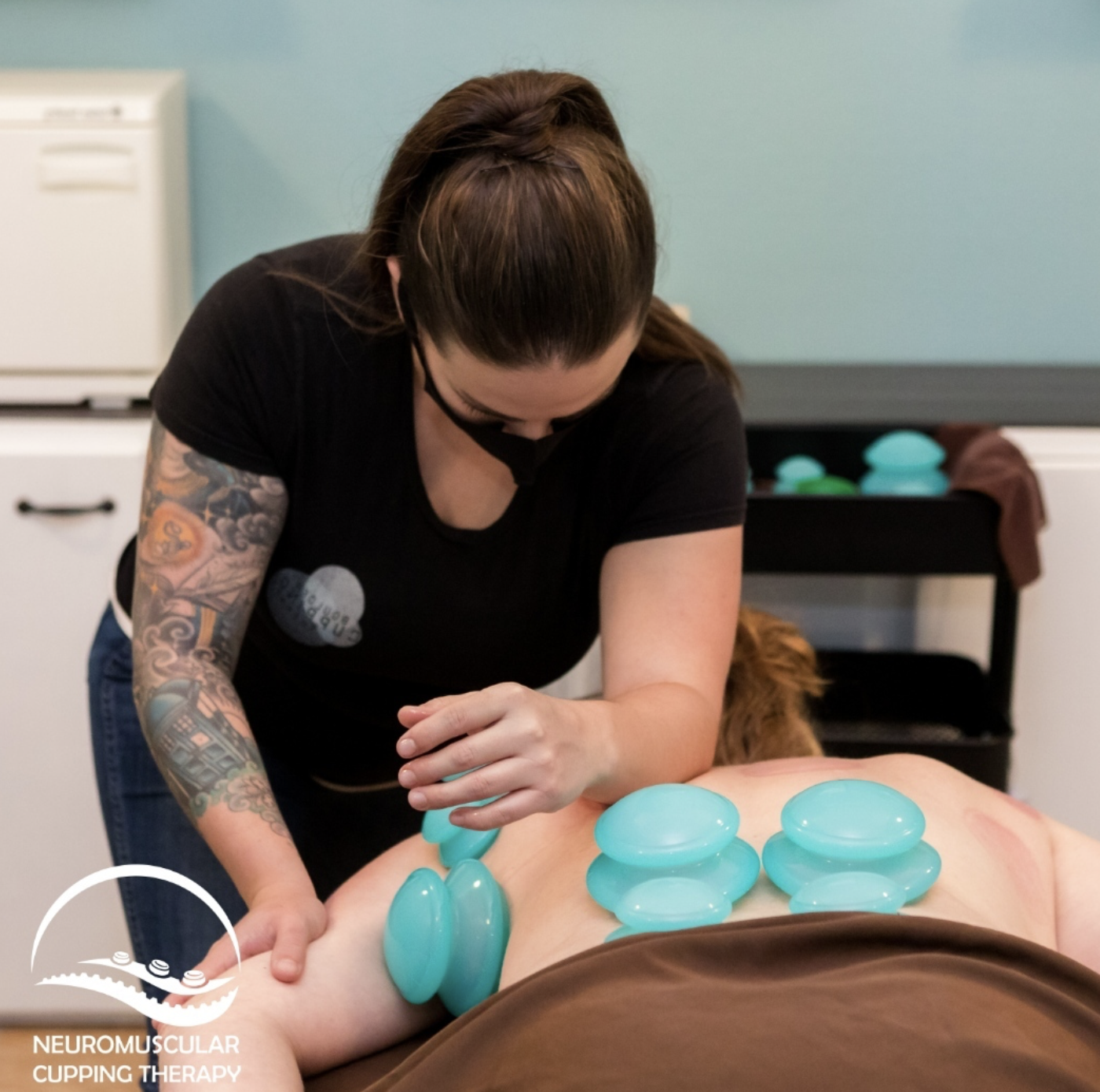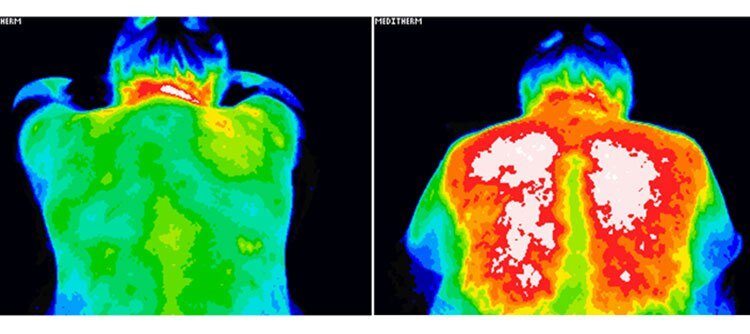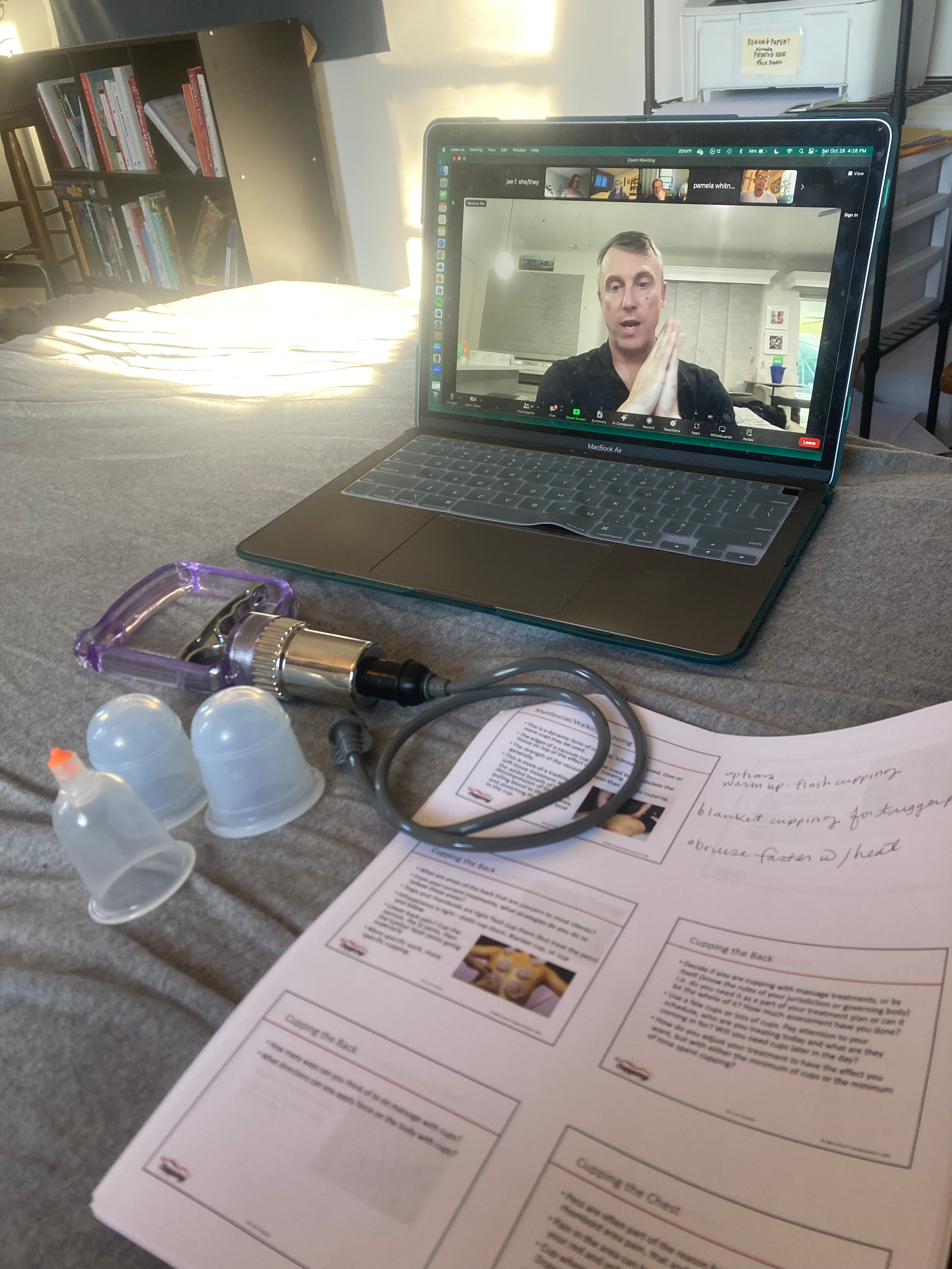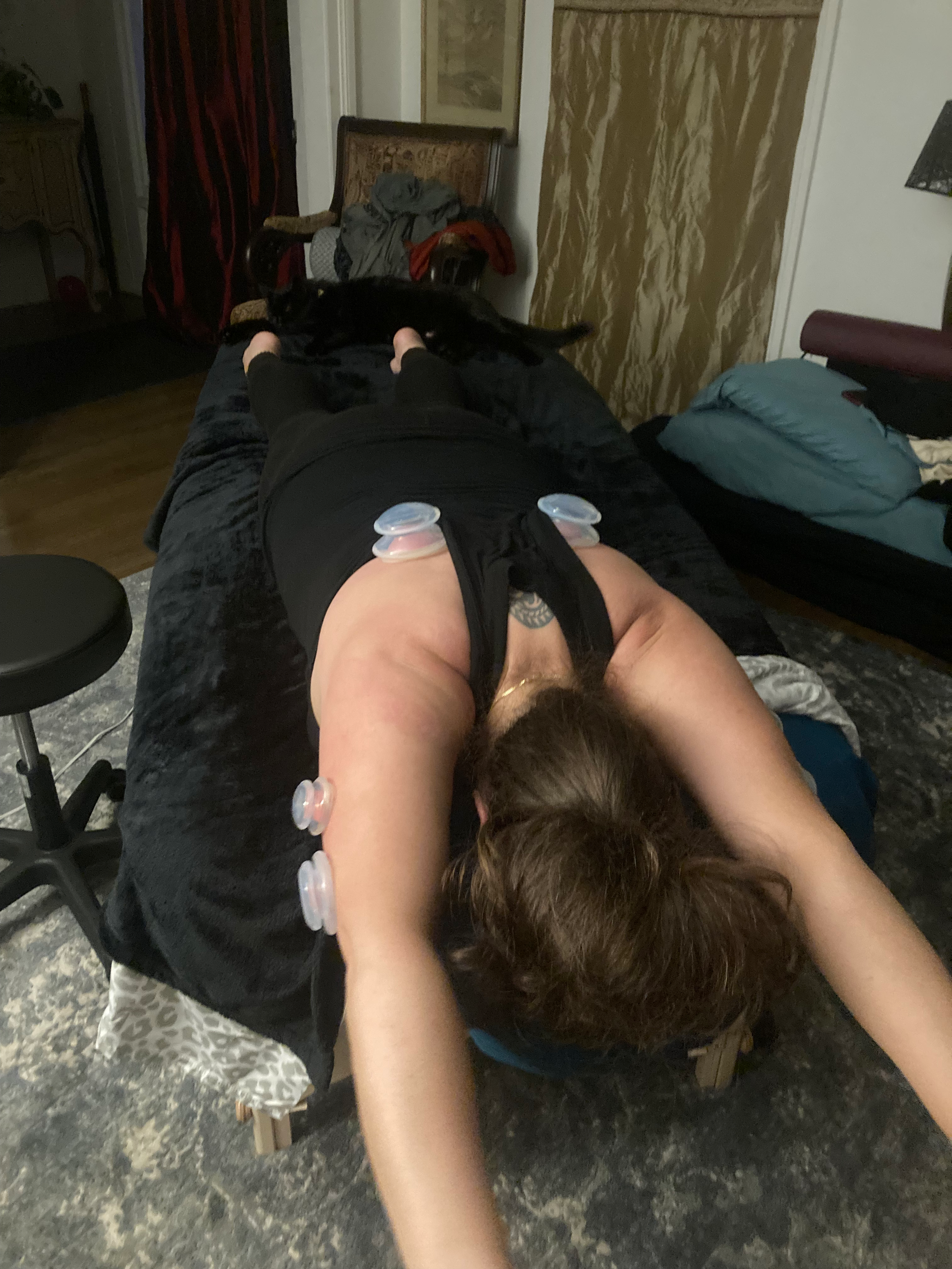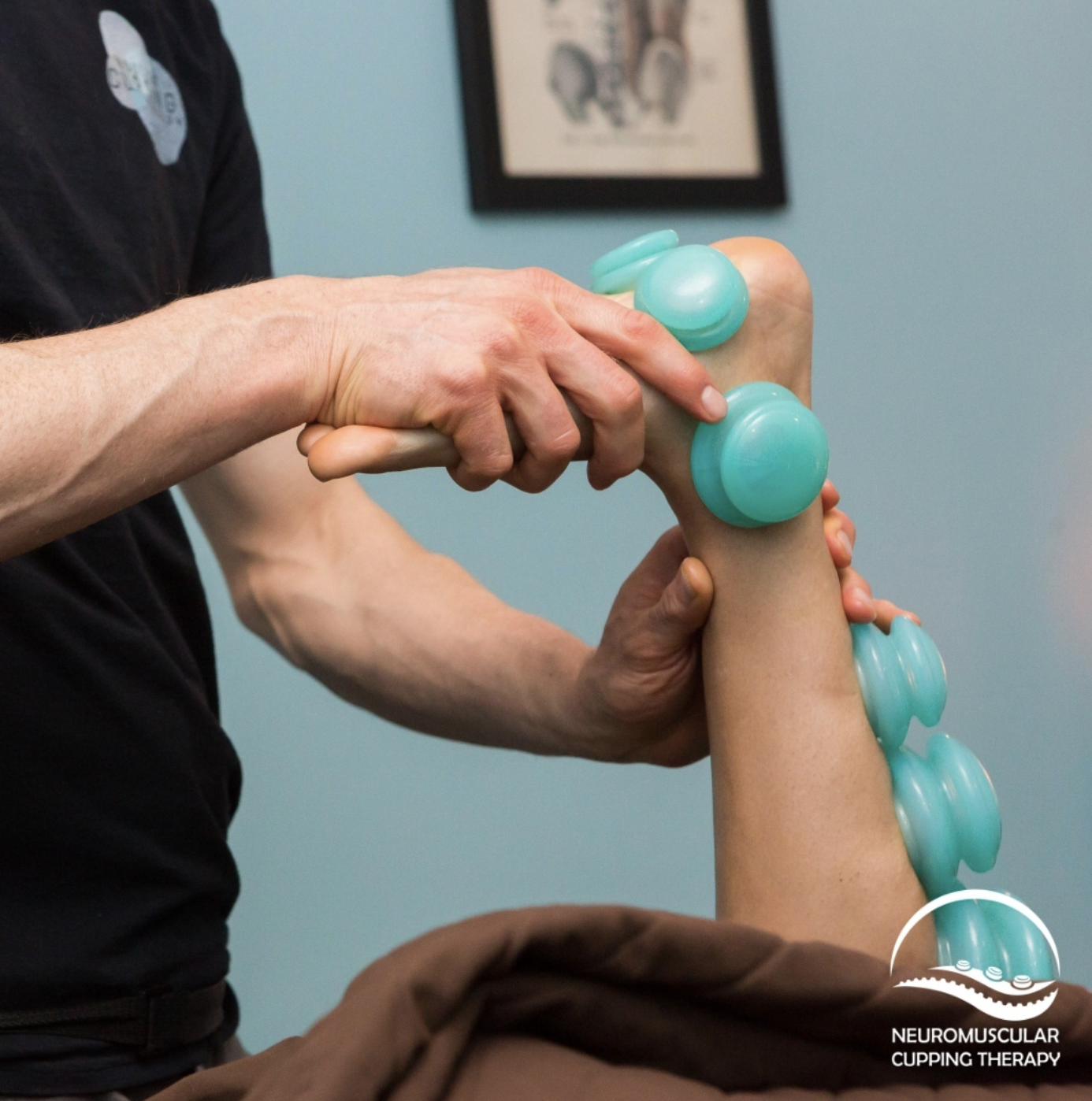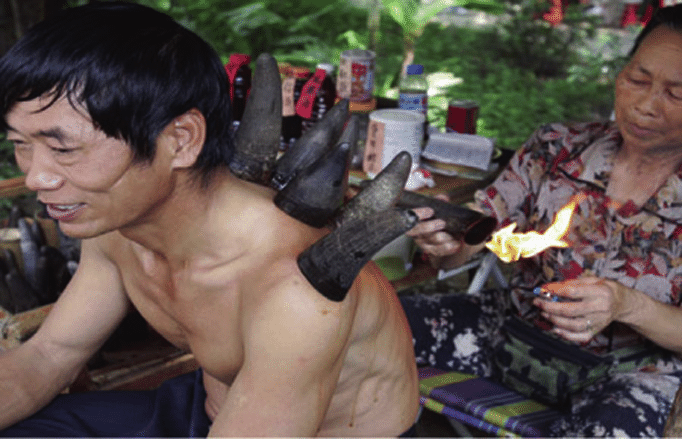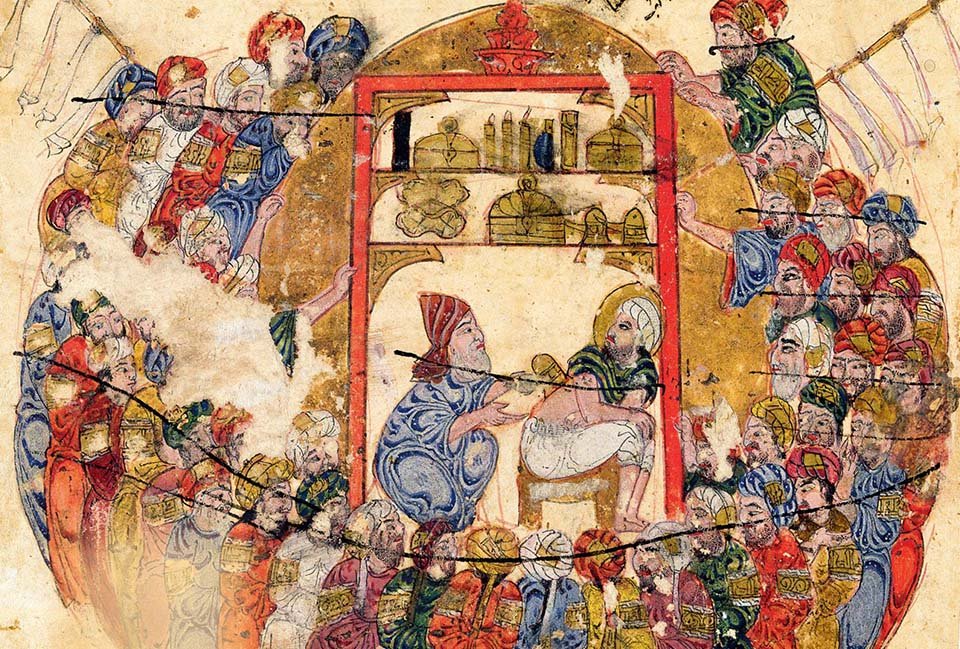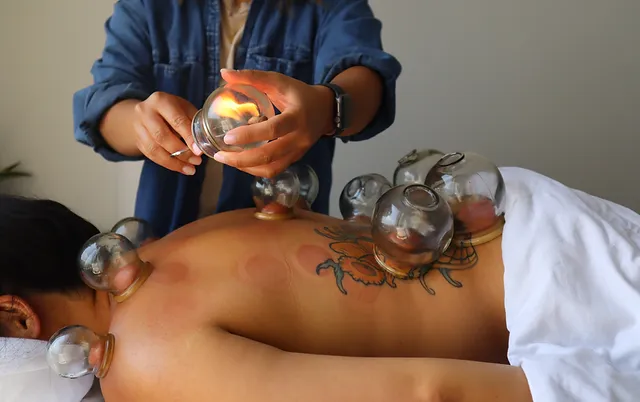Cupping
This page should help with many questions you may have about cupping to feel prepared to try cupping during your next massage!.
If you have more questions, please reach out to Jae or bring them up before your session!
Why use cupping?
Image of Gretchen Popp demonstrating Neuromuscular Cupping Therapy techniques
Research into cupping has shown particular effectiveness for
pain conditions
muscular tightness
arthritis (especially RA)
entrapment syndromes (carpal tunnel syndrome, thoracic outlet syndrome)
While the effects of cupping have been researched, Western science is still figuring out the why of cupping therapy’s effectiveness.
Some of the physiological effects of cupping include:
encourage circulation
alleviate adhesions (“sticky” knots of connective tissue)
lift, rehydrate, and manipulate fascia (connective tissue)
“One of cupping’s most notable benefits is the encouragement of blood circulation, venous return and lymph fluid movements. These photos show how the person’s overall blood distribution has increased exponentially through gentle, non-aggressive cupping applications.” Shannon Gilmartin
What does cupping feel like?
Jae uses either medical-grade silicone or plastic cups to provide “negative pressure” (suction).
Many massage techniques use downward pressure (pressing down on the tissues), so this “negative pressure” of cupping is a novel stimulus for our nervous system. This novelty can be part of what allows our nervous system to release and relax chronically tight, contracted tissues.
Sometimes cupping may feel like a gentle hug from an octopus, sometimes more like if your vacuum hose got stuck on your skin, but the intensity is adjustable and adaptable to find the right level for you. Jae communicates throughout the process to ensure your comfort.
Depending on your goals for your session, cupping can be involved during your whole treatment, for one or two areas of your body, or not at all.
Can I receive cupping?
There are some conditions for which cupping is contraindicated (not safe for a person to receive). All clients go through an intake conversation where we will see if cupping is safe for you.
Do I need to prepare differently for cupping sessions?
If possible, please try to hydrate in advance of your cupping session.
Are there any side effects?
If after your intake we decide that cupping is safe for you to receive, the only side effects possible are mild soreness (possible with any deeper massage) and cupping marks. These marks look like round bruises of various shades, but they are not tender like a bruise.
Some Traditional Chinese Medicine practitioners interpret the different marks to mean different things based on their deep and thorough training in TCM systems.
My perspective on this from my scope as a massage therapist: All bodies are different in their tendency to sustain cupping marks and the intensity of the marks. Even on one person, different parts of your body may mark differently.
Rant alert: Those charts on the internet with different shades of cupping marks circles and what they “mean” are not worth your time: the information is so oversimplified and taken out of context of the nuanced system of TCM that it is essential more like a quiz in People Magazine than a diagnostic tool.
The one piece of information I do think about with cupping marks: if cupping leaves a mark, this can be a sign that deoxygenated blood had been held in that area and that cupping has helped encourage circulation here.
Michael Phelps was one of the athletes to have visible cupping marks at the Olympics in 2016
This is part of what led cupping to be a part of the mainstream conversation more.
But please note: having cupping marks is not necessarily an indicator of the treatment’s effectiveness!
Does cupping have to leave marks you ask?
No! If you have a certain area of your body that you want to ensure does not have cupping marks (wearing a strapless dress or a kilt to a wedding next week?) we can either do light cupping or avoid cupping the area altogether.
What training has Jae done with cupping?
AAS in Massage Therapy at SUNY Morrisville
Evidence Informed Clinical Cupping (Cupping Canada, 16 hours) - 2023
In process:
Neuromuscular Cupping Therapy Certificate (Gretchen Popp, 32 hours) - 2023
History of cupping:
Cupping has been used by many cultures over centuries.
The earliest written record of cupping therapy is from Egypt in 1500 BCE.
Early tools used for cupping were animal horns. Similar to fire cupping practiced by many acupuncturists today, a flame is used to burn the air inside and create a slight vacuum before placing the cup onto the skin.
Over time, people made cupping tools out of many different materials, but modern cups are either glass, silicone, or plastic.
Want to learn more about cupping? Here are reputable sources to use:
Addendum (with content warning: talk of blood):
If you have ever done an image search or had suggested content about cupping that has images of cups suctioned to people and full of blood, please do not let this negatively effect your curiosity about trying cupping with Jae!
This practice is called bleeding cupping or wet cupping and is out of scope for massage: you will never be cut or punctured in your massage. Jae will never cup over existing areas of damaged skin.

